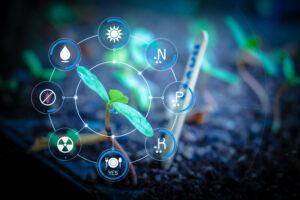Building Trust with Every Byte: Ensuring Transparency with IoT Sensors
In the ever-evolving world of food manufacturing, ensuring traceability and maintaining product integrity are paramount. With increasing consumer demand for transparency and safety, the industry has turned to innovative solutions to address these concerns. One such solution gaining prominence is the use of Internet of Things (IoT) sensors and real-time monitoring. Let’s delve into the role of IoT sensors and how they contribute to advancing food traceability, enabling faster identification of potential hazards, and ultimately ensuring product integrity.
IoT sensors have emerged as a transformative approach to enhancing traceability across the food supply chain. Gone are the days of relying on manual tracking and paper trails. These small but powerful devices offer real-time data on critical parameters, seamlessly integrated into packaging, storage units, and transportation vehicles. By continuously monitoring and collecting data throughout the journey of a food product, IoT sensors enable manufacturers to identify and address potential issues promptly.
Temperature, humidity, and location—these are just a few of the vital factors that IoT sensors monitor in real-time. Imagine a refrigerated container deviating from the optimal temperature range during transportation. With IoT sensors in place, manufacturers receive immediate alerts, allowing them to take corrective actions swiftly. Product quality and safety are maintained, ensuring that consumers receive products of the highest standards.
IoT sensors play a crucial role in preventing foodborne illnesses and contamination. By monitoring storage areas and processing equipment, these sensors detect anomalies in temperature or other parameters, instantly flagging potential risks. Such early detection prompts investigations, preventing the distribution of compromised products. With IoT sensors, manufacturers minimize the potential for foodborne illnesses and related recalls, safeguarding consumer health and preserving brand reputation.
Recalls are an unfortunate reality in the food industry, but IoT sensors help streamline the recall management process. In the event of a safety concern, these sensors provide granular data, making it easier to pinpoint affected batches or lots. As a result, only the affected products are recalled, minimizing waste and reducing the impact on both consumers and manufacturers. The precise traceability offered by IoT sensors ensures an efficient and effective recall process.
IoT sensors not only enhance traceability but also offer valuable insights into supply chain efficiency. By analyzing the data collected from these sensors, manufacturers can identify bottlenecks, optimize transportation routes, and streamline storage and distribution processes. This data-driven approach reduces costs, minimizes waste, and improves overall supply chain performance, benefitting both manufacturers and consumers alike.
In an era where transparency and safety are paramount, IoT sensors provide a powerful tool to build trust with consumers. The ability to track and communicate detailed information about a product’s journey fosters transparency and empowers consumers to make informed choices. With IoT sensors, manufacturers can offer a deeper understanding of a food product’s origin, handling, and safety measures. This transparency builds trust, reinforces brand reputation, and ensures that consumers can have confidence in the food they consume.
In conclusion, IoT sensors and real-time monitoring have emerged as game-changers in the food industry. They have revolutionized traceability, enabling faster identification of potential hazards, and ensuring product integrity. As technology continues to evolve, IoT sensors will undoubtedly play an increasingly vital role in shaping the future of food manufacturing. By harnessing the power of IoT, manufacturers can deliver safer, higher-quality products to consumers worldwide, building a future where trust and transparency are the cornerstones of the food industry.
Ready for a safer and more transparent food system?
